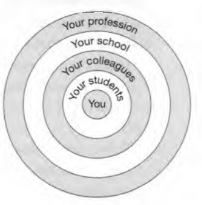Thoughts on self-observation
In the third term at Active Language, our teachers can choose which type of observation they would like to have: a traditional observation with an academic co-ordinator sitting in; a Diploma-style observation, which is similar to the traditional observation though gives the observee a taste of the workload for the Teaching Practice element of the Diploma; or a self-observation.
One of the wonderful things about self-observation is that it can be a less stressful experience for the observee and provide a more realisitic view of the lesson itself. As Wragg says, “the very presence of an additional adult who is not normally present may itself influence what happens” (1999:15) and I’ve often found during traditional observations that aspects of the lesson I had been asked to focus on were less apparent because of my presence in the room. Most recently, I observed a colleague who was working with a challenging group of adolescents who frequently used L1 during lessons. Throughout my observation, their use of L1 was minimal and, in fact, I was amazed at the amount of English they were producing, both in response to tasks set by the teacher and in their interactions. In our post-observation feedback, we joked about how that was an incredibly atypical lesson, though I suggested that the teacher comment on it to the learners, to show them that they are capable of minimal L1 use. She did, and their response was, “We were only doing it for your benefit because we knew she’d come to watch you teach.”
Another benefit of self-observation is that it doesn’t need to be timetabled in beforehand, as a traditional observation often is. For example, you may be thinking of focussing on a particular learner within a group and, inevitably, when a traditional observation is scheduled, that learner doesn’t come to class that day. And, speaking of focus, a self-observation gives you the opportunity to concentrate on a particular stage in the lesson – as though it’s useful to view the lesson as a whole, you may be more interested in looking at how effective your instructions were for a specific activity, how the learners interacted during a communicative task or how clear your boardwork was after presenting a grammar point.
In The Developing Teacher, Foord shows us the five circles of development and states that a good reason for focussing on ‘you’ may be that you work alone, in which case self-observation is perhaps the only option available to you. However, whatever your working environment, he recommends using self-observation as a development tool as part of your routine and provides a wonderful starting point with “Mirror, mirror” (2009:32).
Richard Whiteside, a former colleague, wrote a post on self-observation prior to our school’s implementation of them a number of years ago and he makes a good point that self-observation can be done at any point during the year. We all generally reflect on our classes at the end of the day, but by ‘formalising the process’ we add further weight to it and teachers will gain benefit from it in a different way. Talking through a lesson with a ‘critical friend’ either before or after the event will allow you space to reflect on stages, activities, interactions and many other features of the lesson and will perhaps bring up questions which you would not have thought of if reflecting alone.
References:
Foord, D. (2009) The Developing Teacher Delta Publishing
Whiteside, R. (2012) Teacher Observation: Could you benefit from self-observation? St George International
Wragg, E.C. (1999) An Introduction to Classroom Observation (second edition) Routledge
